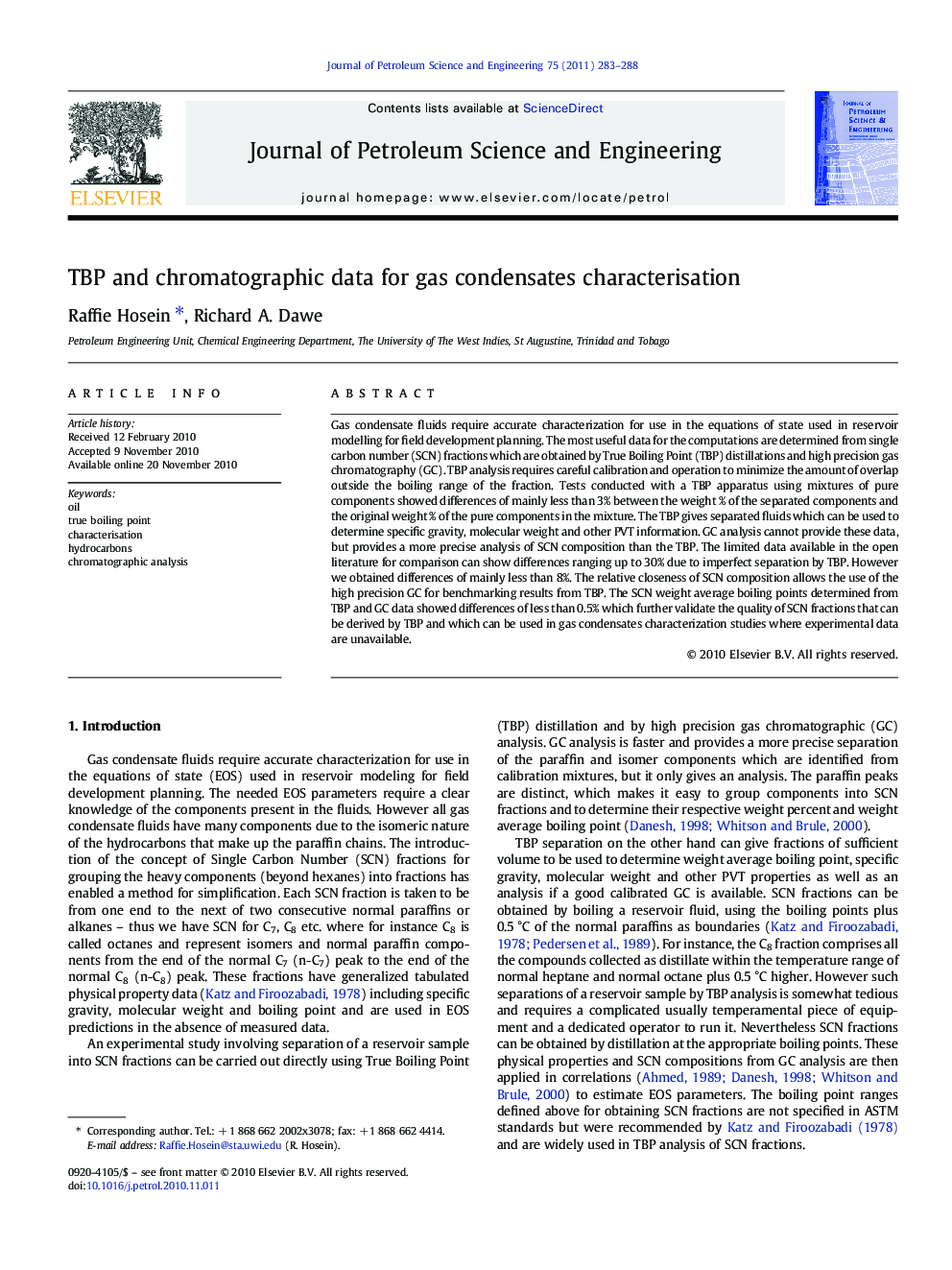| Article ID | Journal | Published Year | Pages | File Type |
|---|---|---|---|---|
| 1755925 | Journal of Petroleum Science and Engineering | 2011 | 6 Pages |
Gas condensate fluids require accurate characterization for use in the equations of state used in reservoir modelling for field development planning. The most useful data for the computations are determined from single carbon number (SCN) fractions which are obtained by True Boiling Point (TBP) distillations and high precision gas chromatography (GC). TBP analysis requires careful calibration and operation to minimize the amount of overlap outside the boiling range of the fraction. Tests conducted with a TBP apparatus using mixtures of pure components showed differences of mainly less than 3% between the weight % of the separated components and the original weight % of the pure components in the mixture. The TBP gives separated fluids which can be used to determine specific gravity, molecular weight and other PVT information. GC analysis cannot provide these data, but provides a more precise analysis of SCN composition than the TBP. The limited data available in the open literature for comparison can show differences ranging up to 30% due to imperfect separation by TBP. However we obtained differences of mainly less than 8%. The relative closeness of SCN composition allows the use of the high precision GC for benchmarking results from TBP. The SCN weight average boiling points determined from TBP and GC data showed differences of less than 0.5% which further validate the quality of SCN fractions that can be derived by TBP and which can be used in gas condensates characterization studies where experimental data are unavailable.
Research Highlights► TBP distillation can provide reliable separation of hydrocarbon mixtures. ► This can be demonstrated by comparing compositions determined by TBP and GC. ► Literature shows differences up to 30% due to imperfect separation by TBP. ► Differences of mainly less than 8% were demonstrated in this study. ► High accuracy relies on equipment calibration and operational procedures.
